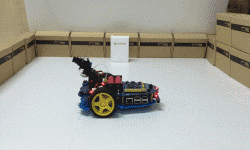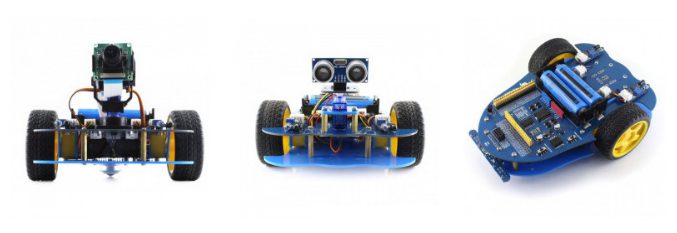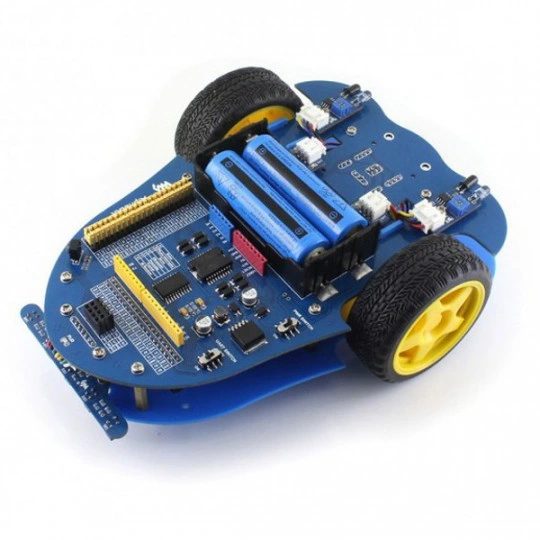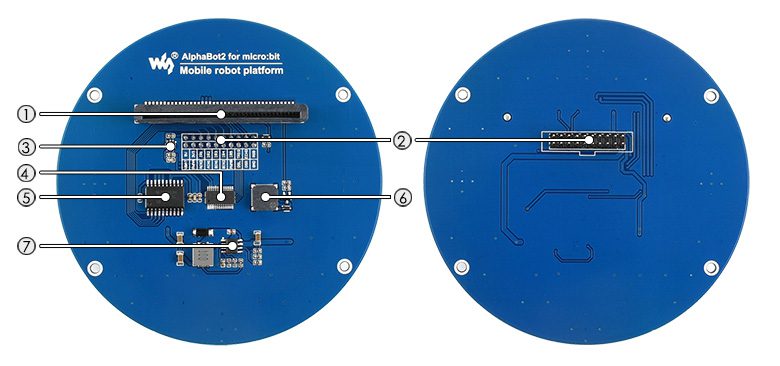Table of Contents:
Building a robot yourself & from scratch is not easy. There is always a part missing when assembling the mechanics. Ready-made kits, and a completed machine in them, allow you to go straight to programming.
Waveshare Educational Robots
Based on Waveshare robots we can build remote controlled vehicles. Assembling the chassis, or robot base, and putting the base electronics on place is a piece of cake for absolutely almost anyone. The steps start to arise when creating a custom robot. But if it’s a tiring trip, it;s still a chosen one – and leads to a place full of creativity. If so, they lead to a place full of creativity. Our robot executes commands using the included IR remote control. We can also set full-fledged robots in motion, which independently follow lines on the ground and avoid obstacles in unknown terrain.
For many tasks controllers based on Arduino Uno will be sufficient nearly at hand. If you want to add additional elements, you can use Raspberry Pi Zero, which can handle even more complex tasks. Every creator, worldbuilder, wizard – whatever word we use here – will appreciate the possibilities to improve their creation infinitely. With Alphabot, dreams of a mobile robot with a camera, able to explore the environment and transmit images from its mission, can finally stop being dreams, because they become reality. The fun of modifying and experimenting is irreplaceable.
What is Alphabot?
AlphaBot is a versatile robot development platform compatible with Raspberry Pi, Arduino and BBC micro:bit. Simply plug in a controller board and, combined with code – including open-source code offered by Waveshare – the kits are ready for exploration.
We can start with features such as line tracking, obstacle avoidance or video recording. Also included are WiFi and Bluetooth remote control or support for the ZigBee protocol popular among building automation fans.
The universal, two-wheeled platform with a support ball based on the main board is powered by DC motors that can be operated with a microcontroller with a controller. Of course, the previously mentioned microcontrollers are included here, but that depends on the particular kit. The seven variations include various additional modules and compatibility with specific, not necessarily competing, platforms.
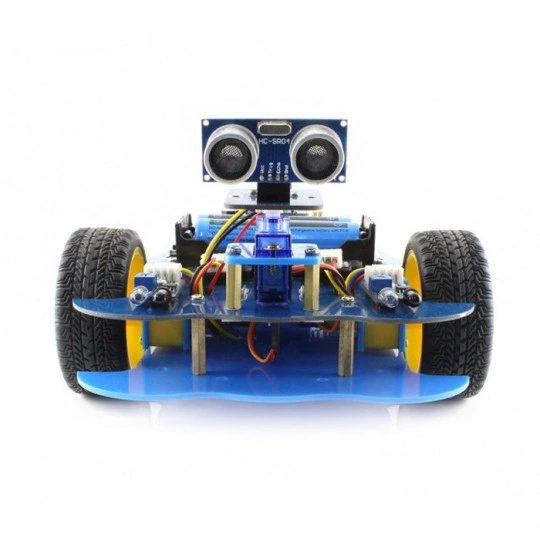
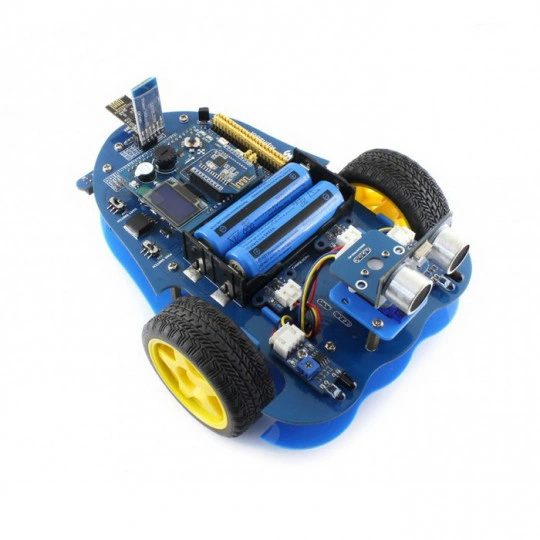
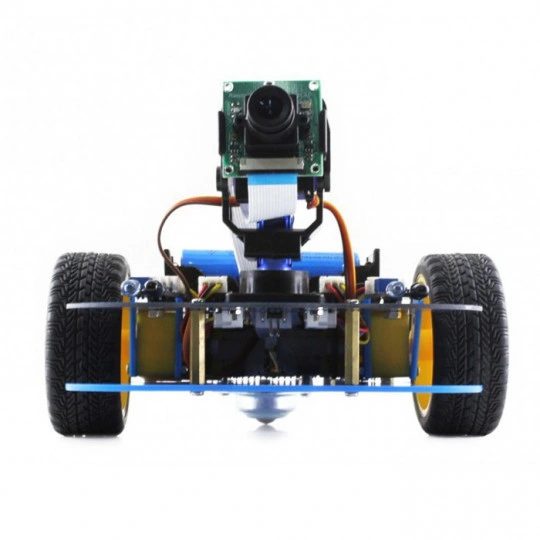
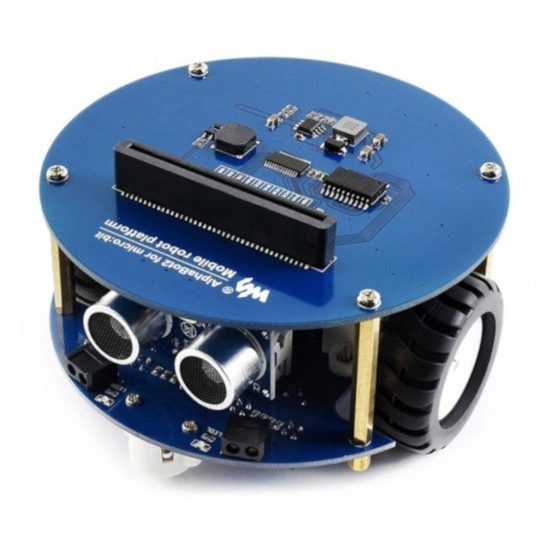
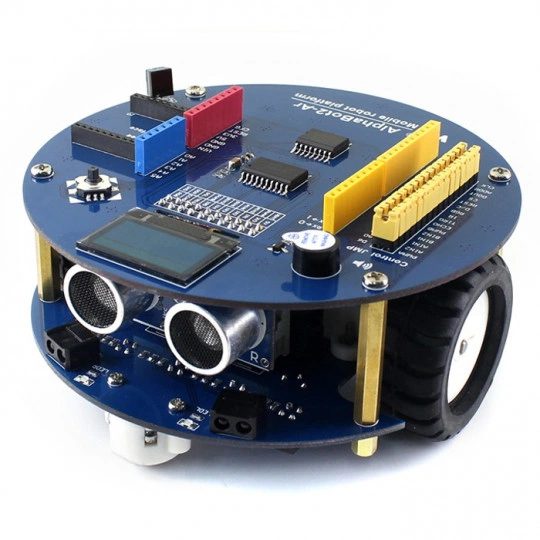
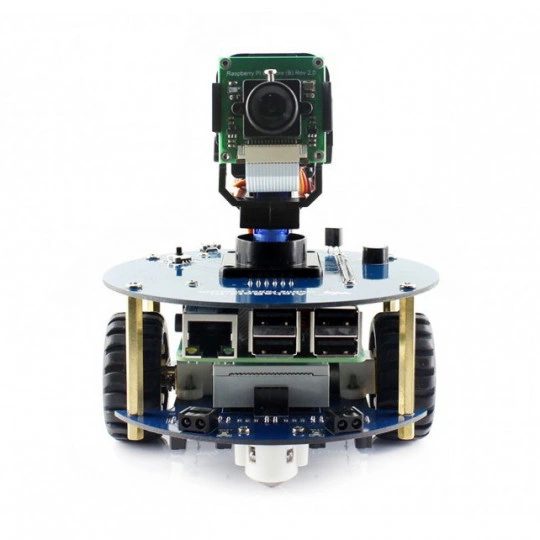
Previous
Next
CHECK AT STORE
Alphabot Basic – the classic
Primal, basic one. AlphaBot Basic is a universal two-wheeled platform with a support ball. It has two DC micro motors that can be controlled by any microcontroller with a controller. It has a line sensor, speed measuring module, infrared proximity sensor, remote control and Uno Plus module, servo and ultrasonic distance sensor. Assembly is to bolt on the motors, put on the wheels and any controller mentioned. On the platform everything is already there – there are LM298P motor controller, LM2596 voltage regulator for stable 5V voltage and TLC1543 A/D converter. Apart from that, there are numerous connectors at our disposal for connecting all the modules we can think of. The manufacturer manual in English is a step by step instruction of the basic setup up leading to the stage on which Alphabot robot is ready to work.
The power of the robots lies in the chassis, to which all the key components are attached. Let’s take a look at the platform diagrams.
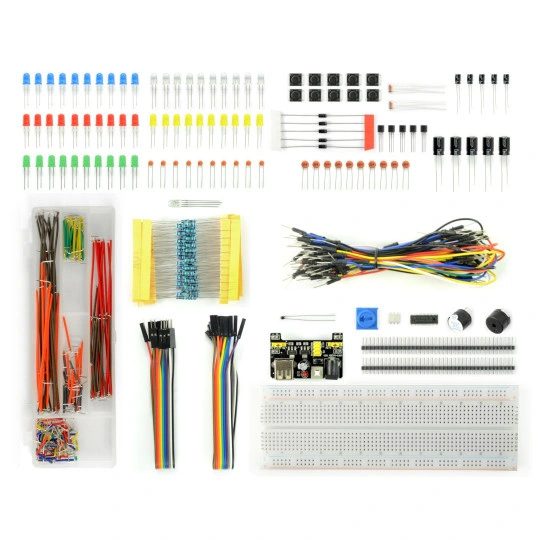
Alphabot platform
- Raspberry Pi interface: for RPi connection
- Arduino interface: for Arduino connection
- Motor connector
- Ultrasonic distance sensor
- Servo connector
- Obstacle avoidance module connector
- Speedometer connector
- Battery cage for 18650 batteries (not included – purchase separately)
- Slot for external power supply connection
- Arduino connector for Arduino overlays
- UART interface for Bluetooth module connection
- SPI interface for NFR24L01 module connection
- Line sensor connection
- TLC1543 converter: 10-bit, allows to use analog RPi modules
- LM298P bridge for motor control, up to 2 A
- Diode for reverse current prevention
- Power switch
- LM2596 5 V voltage regulator
- Power supply indicator (diode)
- UART switch: for Arduino and Raspberry communication
- IR receiver for IR robot controlling
- Arduino / Raspberry selector: to choose device that will controlling robot’s peripherals
We also look at other base platforms depending on the model.
Alphabot2-Base platform
- AlphaBot2 control interface for sensors
- Ultrasonic module interface
- Obstacle avoidance indicators
- Two Omni-type support balls
- ST188 infrared sensor for obstacle avoidance
- ITR20001 sensor for line detection
- Obstacle avoidance range adjustment potentiometer
- TB6612FNG dual channel H-bridge motor driver
- LM393 voltage comparator
- 2 micro N20 motors; 1:30 gearing, 6 V, 600 rpm
- 2 rubber wheels: diameter 42 mm, width 19 mm
- Power switch
- Battery basket type 14500
- RGB LCD WS2812B
- Power indicator
AlphaBot2-Ar platform
- AlphaBot2 control interface for AlphaBot2-Base connection
- Arduino pinout for Arduino connection
- Arduino interface for compatible Arduino controller connection
- Xbee Bluetooth module connector, remote control for Bluetooth controlling
- IR receiver
- PC8574 I/O expander, SPI interface
- Arduino jumpers
- Buzzer
- 0.96″ OLED display: SSD1306 controller, 128 x 64 px resolution
- Joystick
AlphaBot2 BBC micro:bit platform
- BBC micro:bit module connector
- AlphaBot2 control interface for AlphaBot2-Base connection
- RT9193-33: 3.3 V voltage regulator, power supply for micro:bit
- PCA9685: PWM control chip, I/O expansion, I2C interface
- TLC1543: 10-bit A/D converter, allows micro:bit module for tracking sensor usage
- Buzzer
- WMP1584: 5 V voltage regulator
Each kit comes with accompanying diagrams and instructions in English. There is no denying that the diagrams provided by the manufacturer Waveshare are insuring when reading, because basic installation of Alphabots does not require exceptional skills. Instead, it requires to assembly the components, and each kit contains a set of those. They can be found in the product description on the store’s website. The diagrams and tutorials can be found in the useful links section.
How useful was this post?
Click on a star to rate it!
Average rating 0 / 5. Vote count: 0
No votes so far! Be the first to rate this post.

